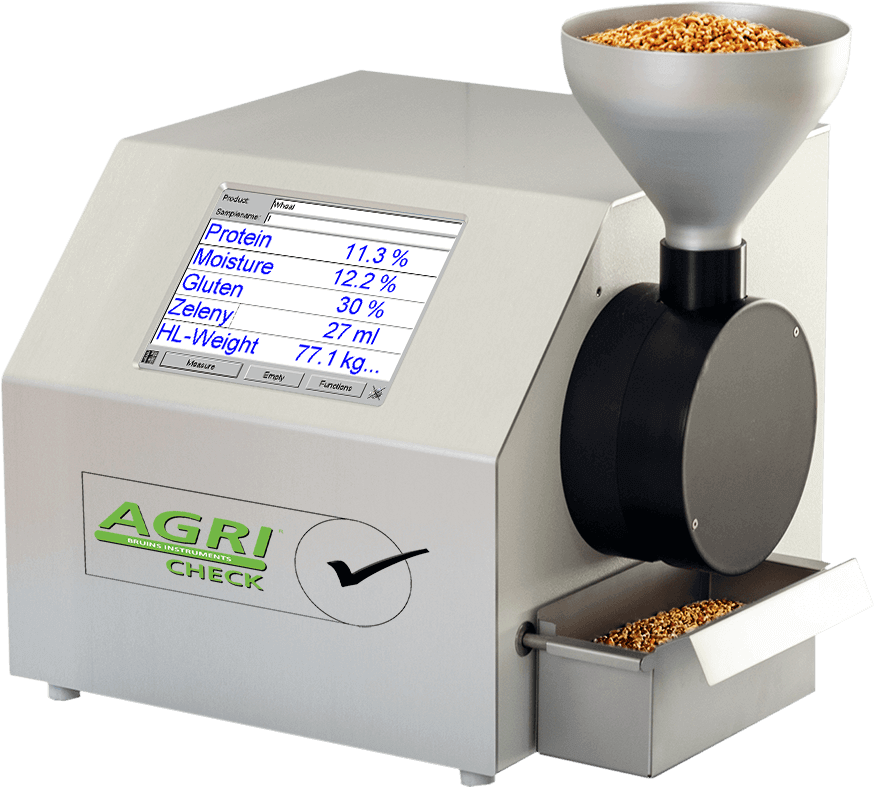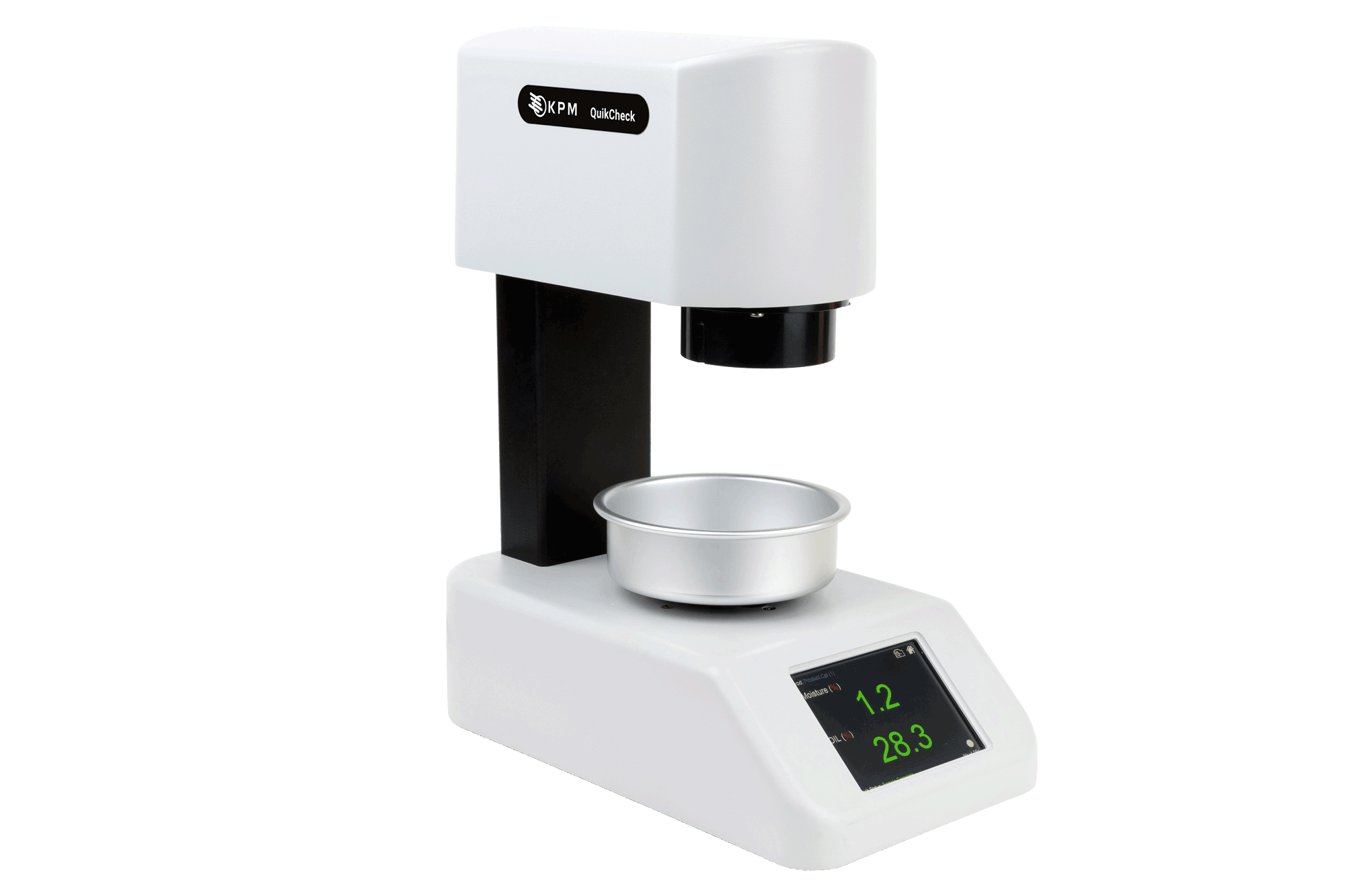Analysis of Bread Loaves

Quality Control Solutions for Bread Loaves
As technology and quality control methods have evolved, bakers have advanced the craft of producing loaves of bread for consumers into a science, improving batch-to-batch consistency while also opening the door to new and exciting recipes. By incorporating instruments to measure the quality of incoming flour, evaluate dough behavior for a specific baked product or recipe, or integrating vision inspection technologies to help standardize bread loaf appearance, baking companies can manage the quality of each loaf of bread better than ever.

NIR Analysis of Bread Ingredients
Near-infrared (NIR) technologies have been used by bread bakers either in the quality assurance lab or at-line to collect the full spectrum of moisture and compositional characteristics of flours such as protein, moisture, starch and ash content used to create loaves of bread. Many trusted calibrations exist for a variety of bread flour types to help bakers command important parameters that can impact bread quality.
Taking a proactive approach to verify the quality of your incoming wheat, flour, and ingredients may be easier than you think. NIR analyzers deliver reliable readings in under one minute making it convenient for analysis of incoming ingredients, monitoring the tempering process, in-process evaluation of milling streams, and finished product testing.
Ingredients Analyzed
Ingredients Analyzed
Flour
Specification compliance, quality control, cost control, recipe development, brand protection
Ash, gluten, moisture, starch, protein
Supplier's location, incoming ingredients, lab
Wheat flours, corn flour, spelt flour, buckwheat flour, rice flour, rye flour, gluten-free flours
Dry Yeast
Specification compliance, quality control, cost control, recipe development, brand protection
Moisture
Incoming ingredients, at-line, lab
All types
Fat/Oil
Specification compliance, quality control, cost control, recipe development, brand protection
Fat/oil
Supplier's location, incoming ingredients, lab, online
All types


Functional & Rheological Analysis
There are many different types of bread loaves and large variations in manufacturing processes. However, all have one thing in common - the quality of the finished product depends greatly on the flour.
KPM has developed globally recognized industry standard tools to assist manufacturers in understanding the functional & rheological characteristics affecting the final product in each flour delivery and each batch of bread to be baked. These core analyses can help you to master flour and dough quality from the early stages.
Water Absorption
The amount of water that any flour can absorb increases with high levels of protein, damaged starch (particle size) or pentosans. It is very simple to measure water absorption directly using the KPM solutions outlined below.
Stickiness
This often occurs when starch damage or pentosan levels are too high and the protein levels are too low. Sticky dough causes process machine problems when dividing and pressing tortillas. Measure starch with the SDmatic 2, and protein levels with the SpectraStar™ XT-F NIR Analyzer.
Dough Consistency
Dough consistency changes during mixing, reflecting the formation of the gluten network. For any given level of hydration, the consistency of the dough represents its firmness. This depends, on the quantity and quality of the proteins, the level of starch damage, and the pentosans. Mixing consistency may be measured during mixing or after rolling. It is also possible to individually measure the factors responsible for consistency: proteins, damaged starch, and pentosans.
Extensibility
Extensibility is directly measured using the Alveolab™ or AlveoPC. During the deformation of the ball, it stretches to where it reaches its breaking point, mainly influenced by the quality of the protein network. This corresponds to the "L" or "G" value on the Alveograph. Read more about extensibility here.
Elasticity
It takes a certain level of elasticity for the dough to be machinable. If the elasticity is too low, the dough won’t hold shape; if it is too high, the dough will tend to retract, which impacts the appearance of the finished product. Elasticity is measured directly and exclusively with the Alveolab™ or AlveoPC.
Volume
The volume of baguette is primarily influenced by the volume of CO2 produced by the yeast during fermentation. This volume is measured directly by the Rheo F4. The amount of CO2 produced depends on the intrinsic activity of the yeast and also the amount of simple sugars available. The latter is directly influenced by the activity of the amylases present in or added to the flour, which degrade a portion of the starch into simple sugars, usable by the yeast. Damaged starch, measured by the SDmatic 2, is more easily attacked by amylases. It therefore positively impacts the volume.
The volume is also dependent on the quality of the gluten network, measured with the Alveolab™, AlveoPC, and the Mixolab 2. This determines the ability of the dough to develop during fermentation, and to retain the CO2 produced, measured with the Rheo F4.
Color
Baguettes are judged more or less appetizing by consumers according to their color. This parameter is essentially governed by the Maillard reaction, occurring during baking, which relates to the action of sugars on proteins. The more free sugars, the darker the crust will be. The color, as with the volume, is related to amylase enzyme activity and indirectly with the level of damaged starch (SDmatic 2).
Retrogradation
After baking, the starch will tend to partially recrystallize. This phenomenon is called retrogradation and explains why the products become hard (stale). The beginning of retrogradation is very easily measured with the Mixolab. Damaged starch has the effect of reducing the speed of retrogradation, it is measured with the SDmatic 2.

Vision Inspection for Bread Loaves
The phrase ‘Best Thing Since Sliced Bread’ is really an ode to advancements in quality assurance & production methods that help bread makers achieve higher standards. Whether used at-line to analyze bread loaf samples, or integrated in-line or over-line to analyze bread loaves for important visual characteristics at full-line speeds, vision inspection technologies from KPM Analytics can help bread producers manage product specifications and reduce errors or inconsistencies.
KPM offers at-line, and in-line vision systems specifically tailored for high-volume baked goods and snack food producers to help you boost your bottom line by performing quality inspections and detecting & removing foreign materials faster and more efficiently than traditional manual methods.
These systems also provide valuable data manufacturers can use to improve processes and modernize operations. The data gathered from these inspections could also help improve quality assurance programs, enabling a more proactive approach to maintaining product consistency.
Product Types
- Standard Bread Loaf
- Artisan Bread Loaf

Measurement Capability
- 2D/Shape & Size - min/max/avg length & width, center length & width
- 3D/Height - peak/mean height, complete 3D profile, slope, surface texture, volume
- Top & Bottom Bake Color - Lab and BCU coordinates, detect color differentiations
- Topping/Seeding - coverage, distribution, voids
- Scoring/Split/Imprint Conformity Check - min/max length, % of surface covered
Defects Detection Capability
- Misshapen products - e.g. collapsed loaves
- Out of specification products - e.g. too small, too tall, etc.
- Spots - light, dark, foreign material on product surface
- Topping defects - e.g. not enough seeds, or improper distribution
- Scoring defects - missing, too big, or too small

Additional Reading

























